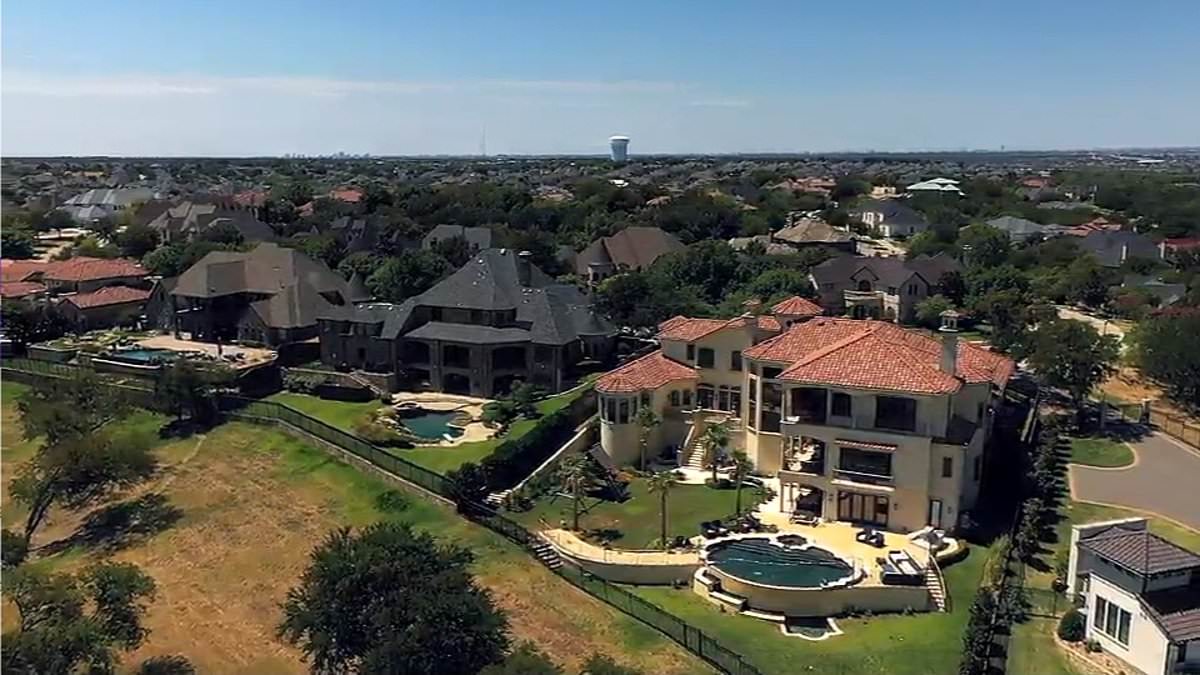America’s upper classes are swelling despite record-high living costs, new research has found.
The proportion of US households considered upper class shot up from 14 percent to 21 percent between 1971 and 2021, according to figures from the Pew Research Center.
It means traditionally blue-collar cities are now being ‘taken over’ by affluent families earning $150,000 and above.
GOBankingRates analyzed all US cities with more than 40,000 households to find where the proportion of upper-class residents has risen most.
Its findings show more than 50 percent of America’s wealthiest cities are in California.
By comparison, states such as Nevada, Virginia, Idaho, Texas and Arizona each had just one city to make the list.
But it was Texan town Lewisville which saw the biggest change.
Some 20.8 percent of 48,725 households were upper-class in 2022, up from 8.8 percent in 2017.
It means over five years it has seen its number of upper-class households rocket by 135.56 percent.
The city, which sits in the Dallas Fort-Worth metroplex, is perhaps most famous for its 29,000-acre reservoir the Lewisville Lake – known as the ‘urban bass fishing capital of Texas.’
The median sale price of homes in the city is $412,000, according to Redfin.
It was followed by Bend, Oregon, which has seen its proportion of upper-class households shoot up by 136.27 percent.
Homes in the area, known for its expansive hiking trails, typically sell for $750,000, Redfin notes.
Among the 17 Californian cities to feature on the list include: Oakland, Anaheim, Oceanside and Oxnard.
California is the wealthiest state in the US, with its net worth totaling $6 trillion – or around $160,000 per resident.
Santa Ana ranked highest of the Californian cities in the study, coming in at number three.
The proportion of its 77,553 households to be considered upper-class was nine percent in 2017.
By 2022, this had increased to 21.2 percent.
GoBankingRates calculated the five-year percentage increase was 135.56 percent.
The increase in upper class households is surprising as Americans continue to battle red-hot inflation and record-high interest rates.
The rate of annual inflation is currently hovering at 3.3 percent, according to figures from the Bureau of Labor Statistics from May.
In response to rising prices, the Federal Reserve has embarked on an aggressive tightening cycle which has sent its benchmark funds rate to a 22-year-high of between 5.25 percent and 5.5 percent.
In theory, higher interest rates are intended to dampen consumer spending and bring prices down.
The Fed’s funds rate has a knock-on effect on interest rates offered to consumers on their mortgages, car loans and credit cards.
Figures from Government-backed lender Freddie Mac show the average rate on a 30-year fixed-rate mortgage is currently 6.95 percent.
